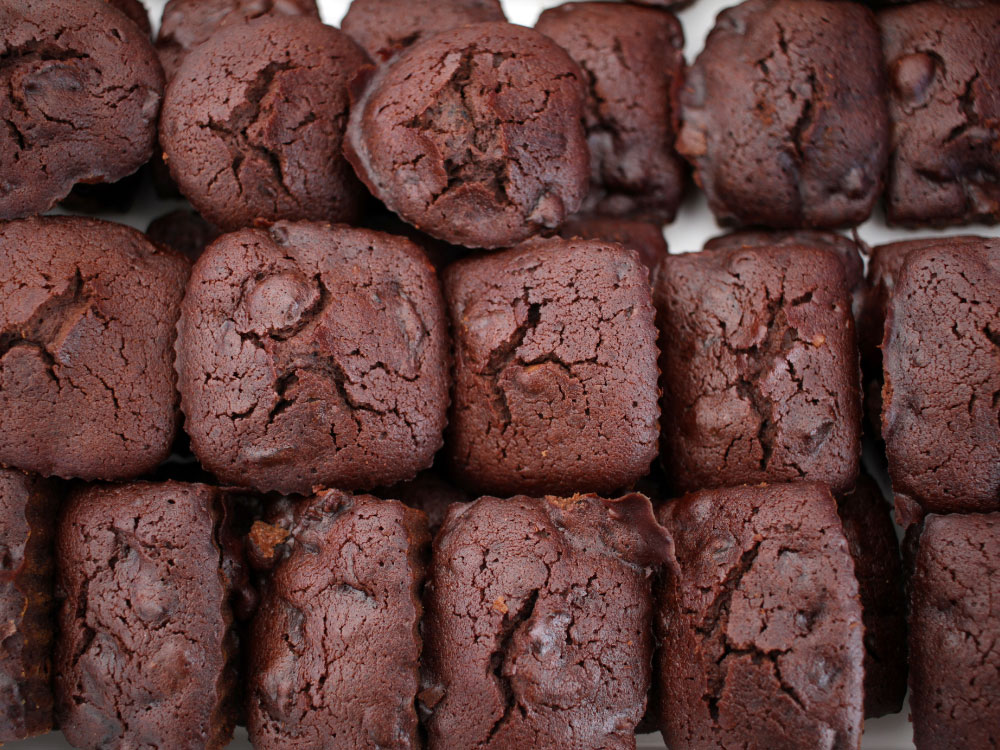The Hodo Foods factory in Oakland, California, turns out all manner of trendy plant-based products: tofu, chewy yuba noodles, and veggie burgers. But the plant also turns out another product: some 50 tons a week of fiber- and nutrient-rich soy pulp, a byproduct of making tofu.
Hodo’s owners did their best to find a home for the pulp. Sometimes cattle farmers would come pick it up to use for animal feed. But pickups weren’t consistent: Soy pulp is heavy and hard to transport; the Bay Area traffic was its own disincentive. Often, Hodo had to pay to dump its waste in a landfill.
Then came Renewal Mill, an upcycling company that takes manufacturing waste and turns it into food people actually want to eat. The company installed equipment inside the Hodo factory to dehydrate and mill the pulp into a high-protein, gluten-free flour. Called okara, it can be used in anything from baked goods to vegan “meat” products. Renewal Mill even launched its own line of gluten-free cookie and brownie mixes.
The old saying goes that you can’t make a silk purse out of a sow’s ear. But perhaps you can. High-end chefs such as Dan Barber of New York’s Blue Hill have long proclaimed the virtues of “nose-to-tail” or “root-to-leaf” cooking, where every part of the animal or plant is used. Think headcheese (surprisingly delicious, despite its name) or carrot-top pesto.
What’s exciting today is that that same philosophy is being applied at scale by a new generation of upcycling companies and in global foodservice firms, which are coming back online after the pandemic. The potential impact is sizable: According to ReFED’s analysis, a $1.9 billion annual investment in upcycling solutions could divert approximately 1.9 million tons of surplus food, avoid 4.8 million metric tons of greenhouse gases, and generate a net economic benefit of $2.7 billion each year.
Upcyclers work with a variety of manufacturing byproducts such as the spent grains from brewers, the pulp from juiced fruits and vegetables, and whey, a byproduct of yogurt. Many of these “leftovers” are turned into snacks like granola bars and veggie chips, but the possibilities are limited only by imagination. One brewer in New Zealand is using stale bread to replace some of the malted barley in its craft beers. This spring, Adam Kaye, a former chef at Blue Hill, debuted a line of sparkling whey tonics under a new upcycling brand, the Spare Food Co. The whey comes from a Brooklyn yogurt company and is fermented at an upstate brewery with fruit juices and a touch of honey and then carbonated. The idea, Kaye told New York Magazine, was to capture the lost value in the food system at scale: “How can we use culinary innovation to take that latent value and create delicious food?”
These products are successfully raising awareness about the byproducts of manufacturing and demonstrating their potential to be something more valuable. And companies are responding to burgeoning demand. The new Upcycled Food Association now has 160 members, including global conglomerates such as Mondelez and Dole. This year, the association unveiled a certification that allows companies to put a seal on products that contain at least 10 percent upcycled ingredients.
Upcycling is one of the most creative ways to maximize product utilization. But simple – and sometimes obvious – changes to existing manufacturing and production processes can help too. Tech firm Seebo uses artificial intelligence to uncover the reasons for production line losses, allowing companies to avoid them. In one case, Seebo helped an international manufacturer of breads, crackers, and biscuits cut production line losses by nearly 70% – saving nearly one million Euros each year. Our analysis shows that optimizing manufacturing lines across the food system can lead to a net financial benefit of $328 million each year.
Active and intelligent packaging is another way to ensure full use of products by slowing spoilage through the use of technologies or adaptive materials that inform as to the quality and safety of the contents. Companies like Apeel have developed edible coatings from natural materials that can significantly increase the time before produce spoils – giving consumers more time to enjoy it.
On the foodservice side, low-tech but important solutions like improved recipe planning can lead to menus that fully utilize all ingredients, save money on smaller procurement orders, and can reduce preparation time. And retailers can adopt in-house repurposing to incorporate products such as meat, seafood, or fresh produce that are either bruised or nearing the end of their shelf life into prepared meals or deli items.
Finding value in foods or leftovers usually deemed worthless is an exciting and essential strategy for tackling food waste. And it offers opportunities across the supply chain – including in consumer kitchens. Anecdotally, we’ve heard that the focus on home cooking during the height of the COVID-19 lockdown led many people to learn new ways to make full use of the ingredients they had on hand, from experimenting with different recipes to make use of all parts of a product to finally learning proper food storage techniques.
Because can we really call something “waste” if it’s still edible, nutritious, and in many cases even delicious?
**This article is available for reprint. Please contact Jeff Costantino at [email protected] for more information.**

